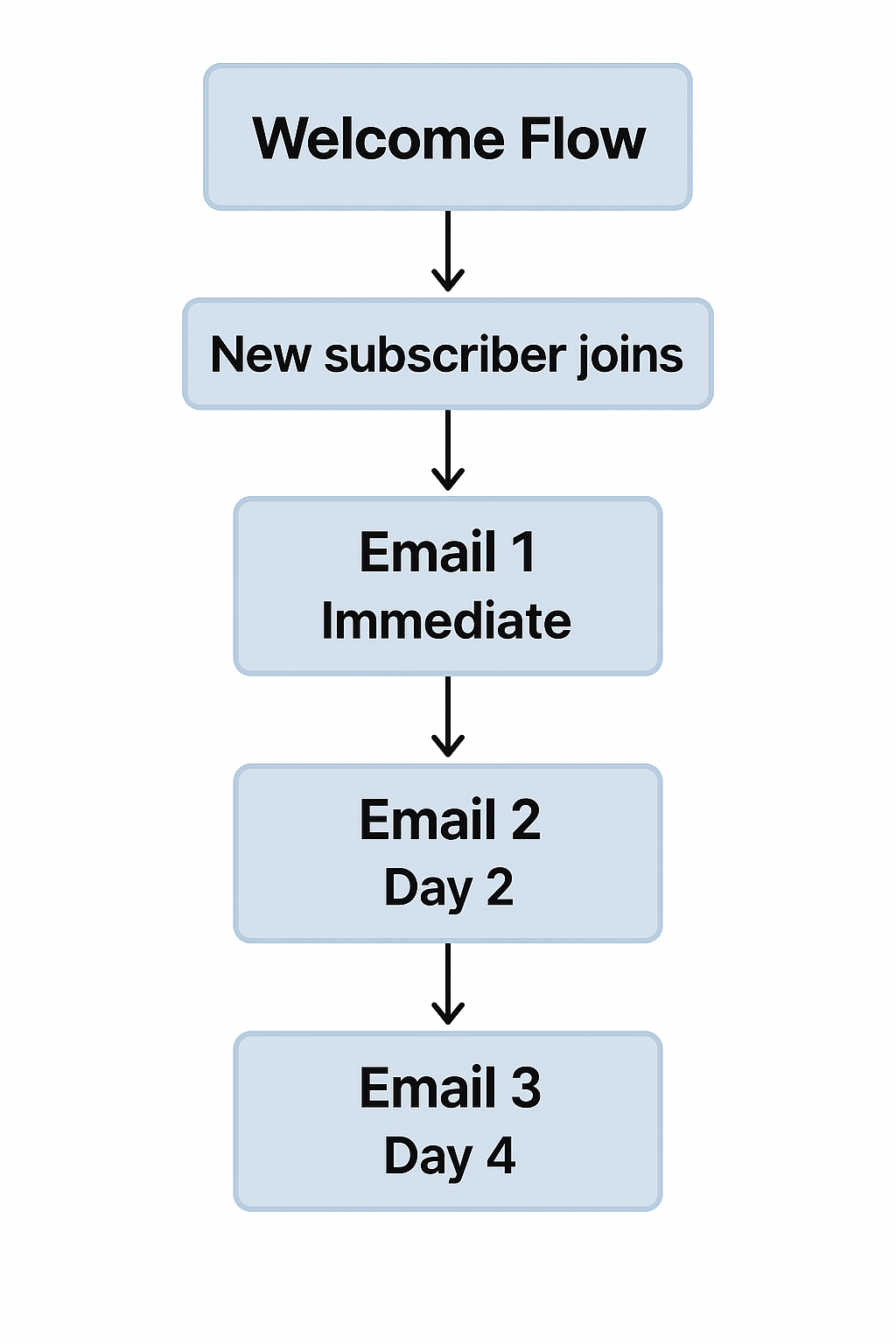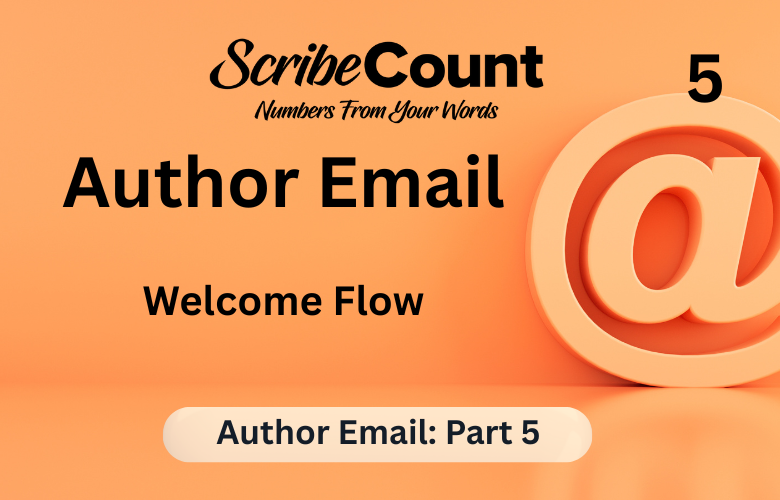Welcome Flow for Indie Authors: How to Make a Powerful First Impression That Sells
In email marketing, first impressions aren’t just important—they’re everything. For self-published authors, the first email a new reader receives is often the moment they decide whether to stay, buy, and engage... or unsubscribe and disappear. That’s why the Welcome Flow is the most essential automation in your author email system.
A Welcome Flow is not a one-off thank you. It’s a planned series of messages that gently introduce your reader to who you are, what you write, and what they can expect. Done well, this flow builds trust, drives traffic to your first paid book, and begins a relationship that can last for years.
This article will guide you through the structure, purpose, content strategy, timing, and tools used in crafting an effective Welcome Flow. We’ll include a visual flowchart and SEO packaging at the end for your site or ScribeCount content hub.
What Is a Welcome Flow?
A Welcome Flow is an automated series of emails that begins immediately after a reader signs up for your newsletter list. Typically triggered by a freebie download (like a short story, novella, or series prequel), the Welcome Flow is your chance to:
- Deliver the promised content
- Introduce yourself and your writing style
- Share where to start reading your series
- Set expectations about future emails
- Invite readers to connect with you elsewhere
Unlike a newsletter—which can feel random or promotional—the Welcome Flow is intentional. It nurtures trust by delivering clear, focused value right from the start.
Why the Welcome Flow Matters More Than Any Other
Your Welcome Flow has the highest open rate of any emails you’ll ever send. Readers are most engaged the moment they opt in, especially if they’re claiming a free book. That window of attention only lasts a few days—so the flow’s job is to quickly:
- Build emotional connection
- Provide context for your books and brand
- Guide readers toward the next logical action (buying Book One, joining your ARC team, etc.)
When done correctly, a Welcome Flow reduces unsubscribe rates, improves long-term engagement, and increases the lifetime value of each subscriber.
Structure: The 4-Part Welcome Flow Template
Here’s a proven structure you can follow:
1. Email 1 – Freebie Delivery + Thanks
Timing: Immediate
Welcome the reader warmly and deliver the freebie. Include download links via
BookFunnel or StoryOrigin and thank them for joining. Keep it simple and
sincere.
2. Email 2 – Series Starting Point
Timing: 1–2 days later
Help readers navigate your universe. Tell them where to start reading your main
series, share a reading order if needed, and link to Book One.
3. Email 3 – Social Proof & Author Story
Timing: 3–4 days later
Include a compelling review, a behind-the-scenes look at your world, or your
personal "why I write" story. Make it emotional, human, and
relatable.
4. Email 4 – What to Expect + Invite to Stay
Timing: 5–6 days later
Explain your newsletter frequency, themes, and value. End by inviting them to
stay or unsubscribe, which builds trust.
What Should You Include in Each Email?
Your Welcome Flow should not sound like marketing copy—it should feel like a conversation with a new friend. Avoid jargon. Use your author voice. Keep each email focused on ONE outcome.
You can:
- Link to your book’s first chapter as a teaser
- Invite readers to reply and introduce themselves
- Share your writing playlist or inspiration
- Recommend the next step (Book One, preorder link, ARC signup, etc.)
Pro tip: Always include your author name, a clear call-to-action (CTA), and a PS line with extra warmth.
Graphic: Welcome Flow Visual Map

Trigger: Subscriber joins list via BookFunnel → Email 1: Freebie Delivery → Email 2: Where to Start → Email 3: Social Proof + Author Story → Email 4: What to Expect + CTA)
How to Tag and Segment Readers After the Welcome Flow
Once a reader finishes your Welcome Flow, it’s the perfect moment to begin segmentation. Based on what they clicked or skipped:
- Tag them as "Clicked Book One" or "Did Not Click Book Links"
- Add to ARC or Review team interest list if they opened all 4 emails
- Route them into your Onboarding or Launch Flows automatically
By analyzing behavior during the Welcome sequence, you can tailor your follow-up messaging.
Tools for Building the Welcome Flow
All of the following platforms support robust Welcome Flow automations:
- ConvertKit: Visual automation builder with excellent tagging
- MailerLite: Clean UX and landing pages
- ActiveCampaign: Advanced logic and CRM integration
- FloDesk: Gorgeous emails, flat pricing
- Klaviyo: Great for authors with ecommerce stores
You can also connect with:
- BookFunnel for freebie delivery
- StoryOrigin for promo swaps and tracking
Mistakes to Avoid
- Don’t overload with too many links
- Don’t skip setting expectations early
- Don’t send too many emails too fast
- Don’t hide your unsubscribe link
- Don’t forget to test your freebie delivery links
Every Welcome Flow should feel like an open door, not a sales funnel.
What Happens After the Welcome Flow?
Once the Welcome Flow ends, your reader should be smoothly transitioned into the next relevant experience:
- Series Onboarding Flow
- Book Launch Flow
- Reader Survey Flow
- Regular monthly newsletter cadence
Your email system should route the reader based on tags and engagement.
Final Thoughts: Your Reader’s First Step Into Your World
The Welcome Flow is your handshake. Your introduction. Your first impression. It tells the reader what kind of author you are, what kind of journey they’re in for, and what they can expect moving forward.
It’s also your best chance to move someone from a curious subscriber to a loyal buyer.
Make it welcoming. Make it sincere. Make it you.

